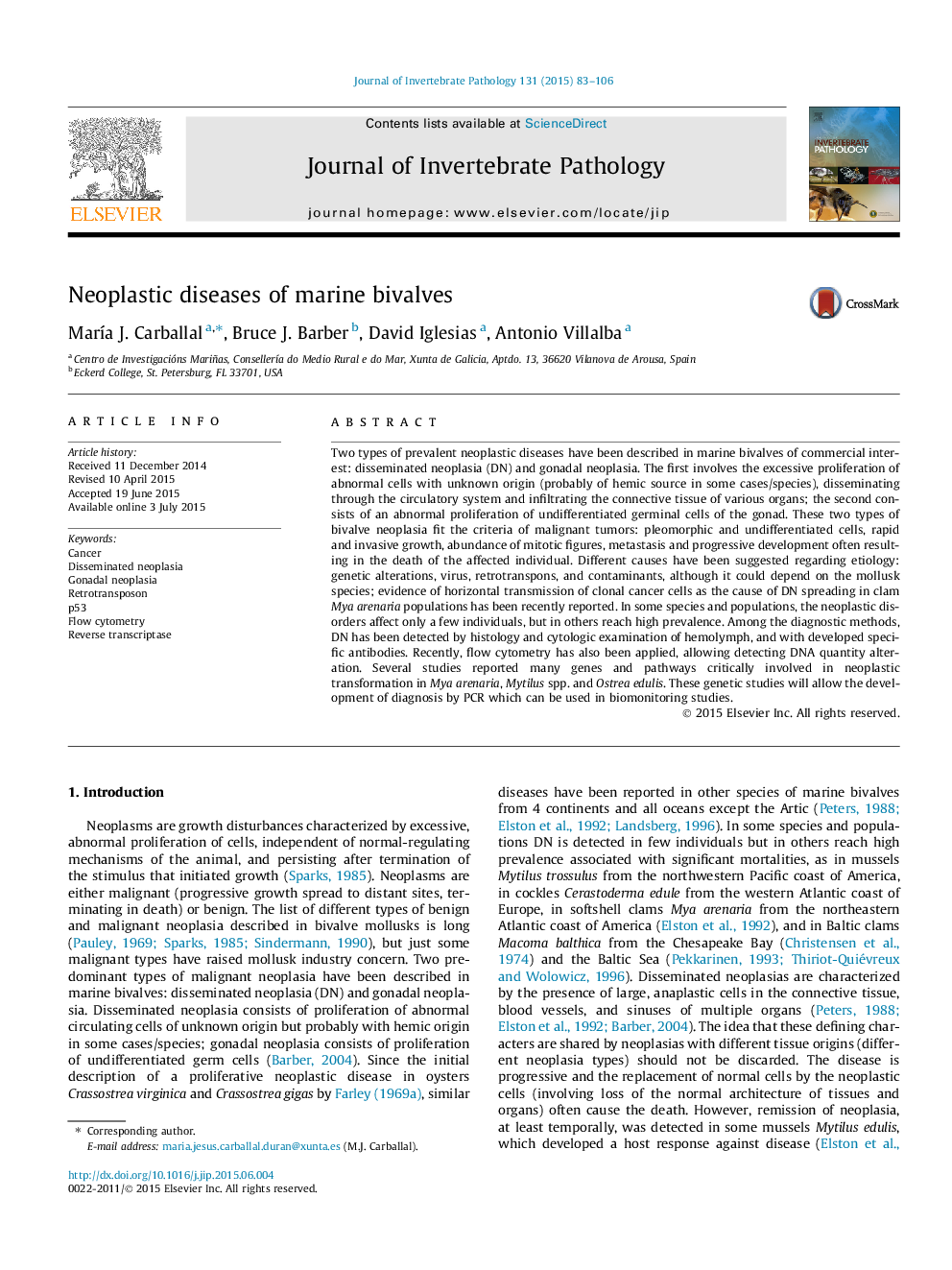| Article ID | Journal | Published Year | Pages | File Type |
|---|---|---|---|---|
| 4557534 | Journal of Invertebrate Pathology | 2015 | 24 Pages |
Two types of prevalent neoplastic diseases have been described in marine bivalves of commercial interest: disseminated neoplasia (DN) and gonadal neoplasia. The first involves the excessive proliferation of abnormal cells with unknown origin (probably of hemic source in some cases/species), disseminating through the circulatory system and infiltrating the connective tissue of various organs; the second consists of an abnormal proliferation of undifferentiated germinal cells of the gonad. These two types of bivalve neoplasia fit the criteria of malignant tumors: pleomorphic and undifferentiated cells, rapid and invasive growth, abundance of mitotic figures, metastasis and progressive development often resulting in the death of the affected individual. Different causes have been suggested regarding etiology: genetic alterations, virus, retrotranspons, and contaminants, although it could depend on the mollusk species; evidence of horizontal transmission of clonal cancer cells as the cause of DN spreading in clam Mya arenaria populations has been recently reported. In some species and populations, the neoplastic disorders affect only a few individuals, but in others reach high prevalence. Among the diagnostic methods, DN has been detected by histology and cytologic examination of hemolymph, and with developed specific antibodies. Recently, flow cytometry has also been applied, allowing detecting DNA quantity alteration. Several studies reported many genes and pathways critically involved in neoplastic transformation in Mya arenaria, Mytilus spp. and Ostrea edulis. These genetic studies will allow the development of diagnosis by PCR which can be used in biomonitoring studies.
Graphical abstractFigure optionsDownload full-size imageDownload as PowerPoint slide
